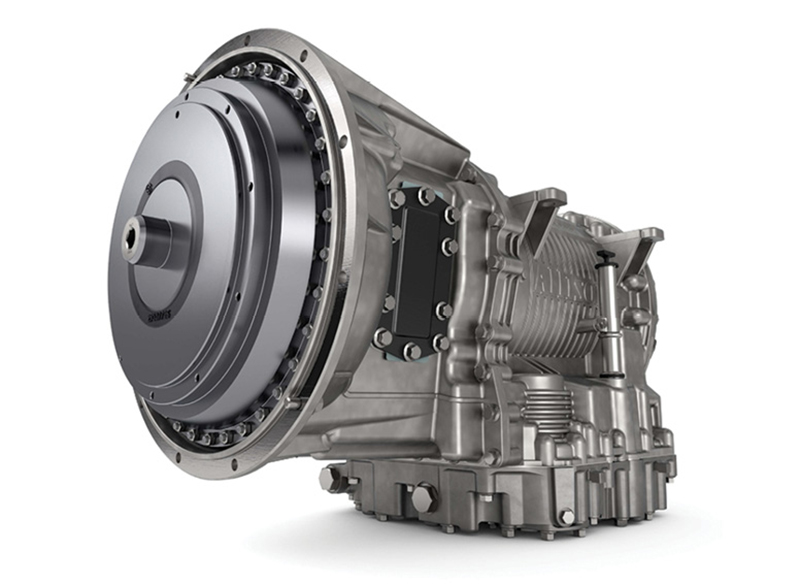The newest generation of engines and transmissions in use on fire apparatus gives the rigs greater power and a smoother transition among the gears while easing the maintenance requirements on the equipment. Manufacturers review the engines and transmissions being used and their attributes.
Chris Crowel, emergency vehicle engine business leader for Cummins Inc., says Cummins has built more than 50,000 engines for emergency vehicles since 2000 with a full line of engines from a 240-horsepower (hp) version for ambulances and 360-hp through 605-hp versions for other types of fire and emergency vehicles.
“The Cummins L9 diesel engine is by far the most popular engine in use on fire apparatus for a number of reasons,” Crowel points out. “With more than 5 million engines sold, we’ve learned how to continually improve that engine platform over the past 35 years, and it’s particularly popular because of its high power-to-weight ratio. It produces up to 450 hp and 1,250 lb-ft of torque with an engine weight of only 1,695 pounds.”
Crowel says Cummins released a new engine in 2018 called the X12. “We did computer-aided design (CAD) modeling from the ground up to optimize every ounce of weight that we could on that engine,” he points out. “At a weight of 2,050 pounds, the X12 is only 300 pounds heavier than the L9 but the X12 can go up to 525 hp and 1,700 lb-ft of torque. It’s the lightest heavy-duty engine available for fire apparatus, with excellent throttle response.”
Crowel notes that the Cummins X15 engine, rated in the 500-hp to 605-hp range, will be part of a fuel agnostic approach in the next few years. “It will be the same base engine with different top end tailored components on it to accommodate diesel, natural gas, and hydrogen fuels,” he says. “We also are working to incorporate a telematic module called Acumen that will collect information from the engine and send it to Cummins engineers to aid in making future engine designs even more reliable.”
He says the benefit to fire departments is that they can subscribe to a remote diagnostics program called Connected Diagnostics for free. By subscribing to this program, designated people at departments will get an e-mail if a check engine light appears. This e-mail will contain the fault codes present in the engine, potential performance impacts, the likely cause of the issue, and where the closest of Cummins’ 3700 service centers is located, Crowel says.
Cummins also is investing heavily on the electrification of engines, Crowel says. “We’re involved with battery electric buses and fuel cell electric vehicles,” he notes, “in addition to working with both Pierce and E-ONE on their latest electric fire apparatus.”
Dave Archer, vice president of engineering for Pierce Manufacturing Inc., believes many of the emissions rules promulgated by federal and state regulatory bodies have complicated the development of engines for the fire service. “The various regulatory bodies issuing directives on emissions have caused changes to engines that have increase the expense and complexity from the development side of things as well as in verification testing,” Archer says.
Archer maintains that rules set by regulatory bodies have complicated things when it comes to clean-air initiatives on fire vehicles. “Their rules have had a big effect on the power and torque of the engines,” he says. “And the rules coming up in 2024 by the California Air Research Board, which have been adopted by 14 states, will require an up to 80 percent reduction in nitrous dioxide (NO2), which will mean an increase in the size of after-treatments to keep them hot enough to do their work properly.”

1 Cummins Inc. used computer-aided modeling to design its X12 diesel engine that weighs 2,050 pounds and can go up to 525 hp and 1,700 lb-ft of torque. (Photo 1 courtesy of Cummins Inc.)

2 The Allison 3000 EVS transmission made by Allison Transmission is designed for medium-duty vehicles. (Photos 2-3 courtesy of Allison Transmission.)

3 Allison’s 4000 Series™ transmission is purpose built for larger, heavy-duty vehicles.
There seems to be a push away from gasoline-powered engines by 2035, Archer believes. “The various regulatory bodies have a desire to help foster the development of electric vehicles,” he says. “They want to make diesel versions so restrictive and expensive that the electric vehicle becomes more attractive.”
On transmissions, the big dog in the market is Allison Transmission, a company that’s spent decades designing and building fully automatic transmissions that perform best in critical situations.
Branden Harbin, executive director of global marketing for Allison Transmission, says Allison offers several propulsion solutions for fire and emergency vehicles, including the 3000 Series™ transmission designed for medium-duty vehicles and the 4000 Series™ that’s purpose built for larger, heavy-duty vehicles. “Both automatic conventional transmissions are designed to improve vehicle performance and fuel efficiency while delivering the reliability and durability Allison transmissions are known for.”
Harbin notes that Allison has introduced fully electric propulsion systems to address the needs of customers that are evaluating electric vehicle capabilities. “In 2020 we introduced the Allison eGen Power™ brand of fully electric axles, including the eGen Power 100D™, one of the most powerful and fully integrated e-Axle systems in the world, designed to replace traditional power train systems in vehicles, including fire trucks,” he says.
Allison’s automatic transmission features Continuous Power Technology™ that provides more power to the wheels than other brands, Harbin says. “Allison transmissions deliver up to 35 percent faster acceleration, and its patented torque converter smoothly multiplies engine torque, delivering increased performance,” he says. “We’ve also entered production with our next-generation electronic controls platform, capable of delivering advanced communications, functional safety, cyber security, and over-the-air programming.”
ALAN M. PETRILLO is a Tucson, Arizona-based journalist, the author of three novels and five nonfiction books, and a member of the Fire Apparatus & Emergency Equipment Editorial Advisory Board. He served 22 years with the Verdoy (NY) Fire Department, including in the position of chief.

